|
Hello!
Dear Friend,
Let me start by taking a moment to say hello and introduce myself. I’m Sarah Lincoln, a new member of the One Tam team and the new Associate Director of Individual Giving. I'm thrilled to be a part of a partnership doing such important work to monitor, protect and steward one of the Bay Area’s most iconic and important natural resources, Mt. Tamalpais.
Our One Tam community is an engaged and generous group, devoting time with our Tamalpais Bee Lab, at Tam Van events, participating in our One Tam Summit to learn more about the health of the mountain, or coming out to habitat restoration days and litter pickup. You can see what’s coming up on our calendar.
To all of our volunteers, members and donors, thank you for making the work of One Tam possible!
I want to share an exciting opportunity to double your impact this season. A group of generous One Tam donors will match all gifts dollar-for-dollar up to $21,000 when you make a gift or become a member before December 31. Ensure the health of Mt. Tamalpais and make a gift today!
Please reach out with any questions you have about making a gift or becoming a member. I'm looking forward to meeting you!
With gratitude,
Sarah Lincoln
Associate Director, Individual Giving, One Tam
Slincoln@parksconservancy.org
|
| |
|
| |
One Tam Summit Continues
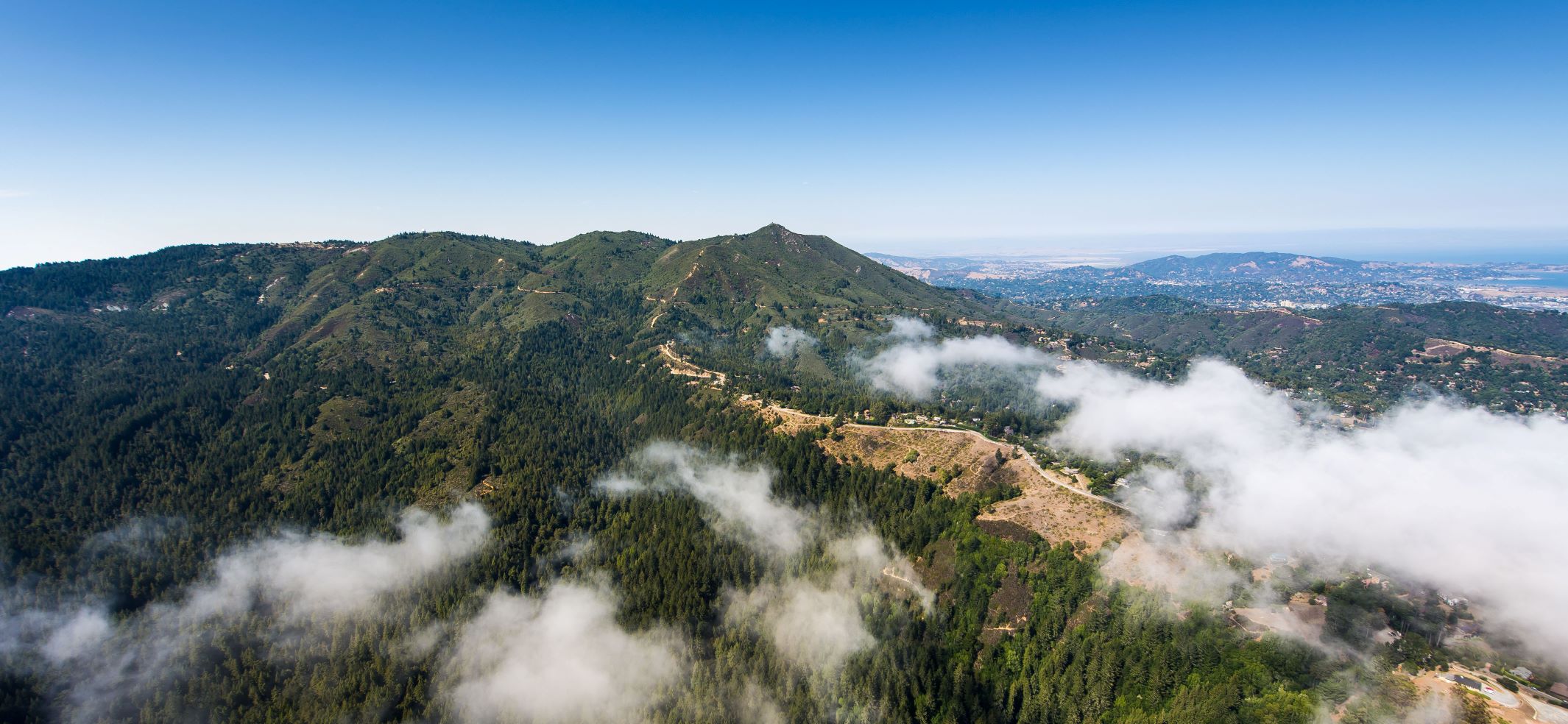 |
|
How healthy is Mt. Tam? Find out through the One Tam Summit series starting this fall. Photo: Steelblue
|
| |
If you missed the Sneak Peek into Peak Health event this fall, which kicked off the 2022 One Tam Summit: Peak Health, fear not: you can catch the recording to get brief updates on the mountain's health and hear from several community members and youth who contribute to our One Tam work. The One Tam Summit is a biannual event that brings staff, scientists, volunteers, students, and community members together to learn about our work to study and improve the health of the mountain. Thank you to all of our speakers and everyone who came out to learn and enjoy time together in person.
This year's Summit is a series, and we have more field trips and virtual sessions in the works – keep an eye on the event page to see opportunities through spring 2023 as they become available. We are excited to offer different ways to engage in this body of knowledge we are building together.
What’s One Tam Summit: Peak Health about? If this is the first time you’re hearing about it, consider the question, Is Mt. Tamalpais at "peak health"? This is central to One Tam's work, and to protecting the region's resources into the future. What do we know about the health of Mt. Tamalpais, and how do we know? What information are we missing? How can you measure the health of a mountain? In 2016, the One Tam partners came together to try to answer these questions, and kicked off an ongoing body of work we call Peak Health. This year, we have come together again for our first mountain-wide update of those 2016 findings. The 2022 One Tam Summit: Peak Health presents this update.
|
| |
|
| |
| |
SUCCESSFUL ONE TAM WEED PROGRAM SPREADS ACROSS CALIFORNIA
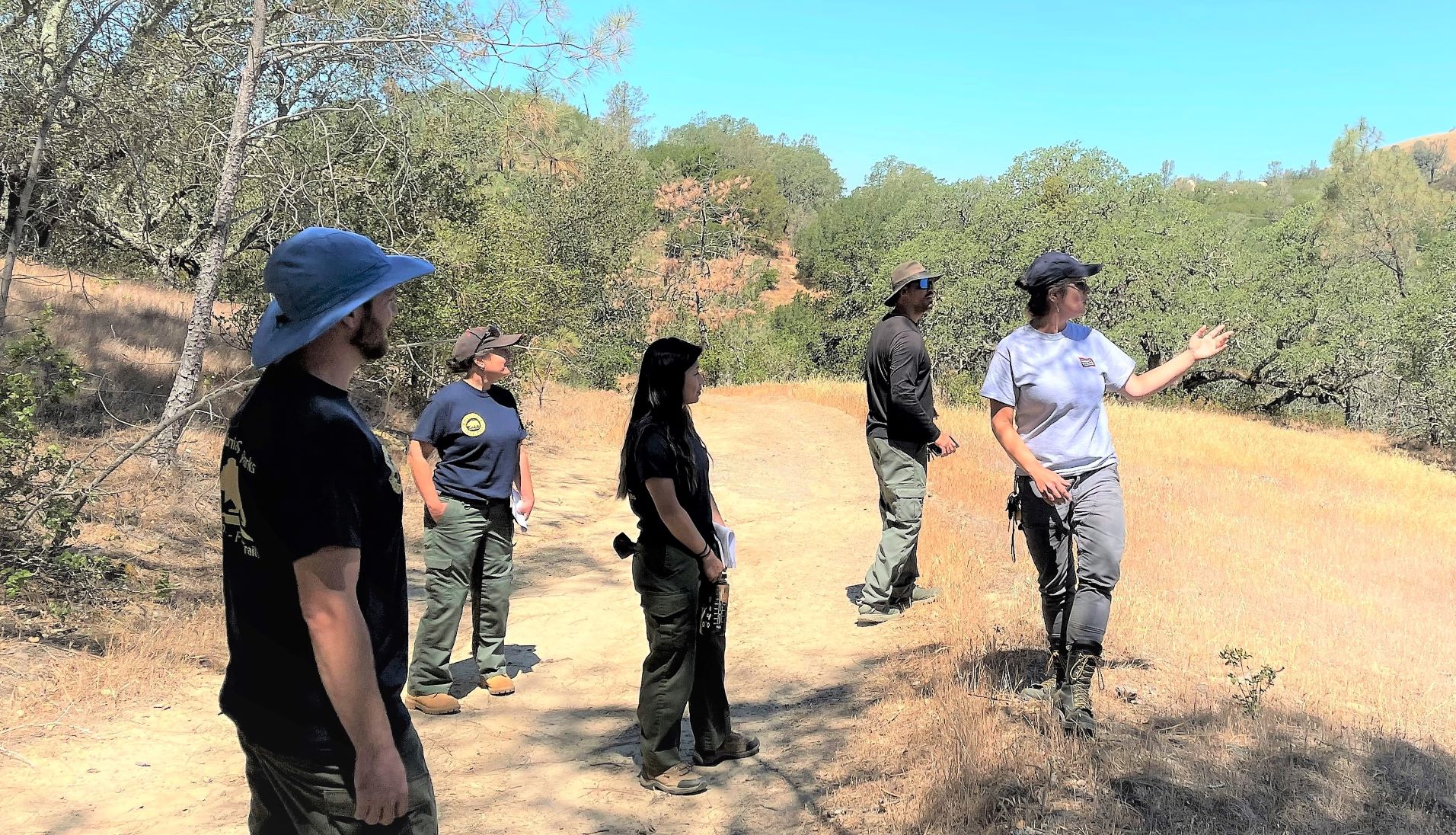 |
|
One Tam Conservation Management Specialist Rachel Kesel (right) leads invasive plant management training. Photo: Leah Gardner/California State Parks
|
| |
As One Tam's Early Detection Rapid Response (EDRR) program for managing invasive plants has demonstrated success, it has become a trainable model for other organizations across California. EDRR means finding and treating patches of priority weeds before they can affect the health of an ecosystem. Parks Conservancy staff have worked alongside California State Parks to create a robust EDRR training program designed to jumpstart efforts at districts around the state.
This endeavor began in 2019 with an update to the State Parks EDRR handbook, which provides foundational guidance on developing species lists, survey geography, and data collection methods. This work has been led by Rachel Kesel, One Tam Conservation Management Specialist and Leah Gardner, Senior Environmental Scientist at California State Parks. Altogether, the training program has reached over 400 invasive plant practitioners. Five additional State Parks districts are scheduled for training by the end of 2023.
As EDRR becomes standard practice around the state, One Tam continues its efforts in Marin County. And you can help! While we survey the mountain for priority invasive plants each year, our spring and summer surveys are not perfectly aligned with the late emergence of stinkwort. If you’d like to help us detect new patches, record your observations of stinkwort using iNaturalist or Calflora.
Read the full story, including how you can help our weed work >>
|
|
| |
Volunteer Opportunities on the Mt. Tam Watershed
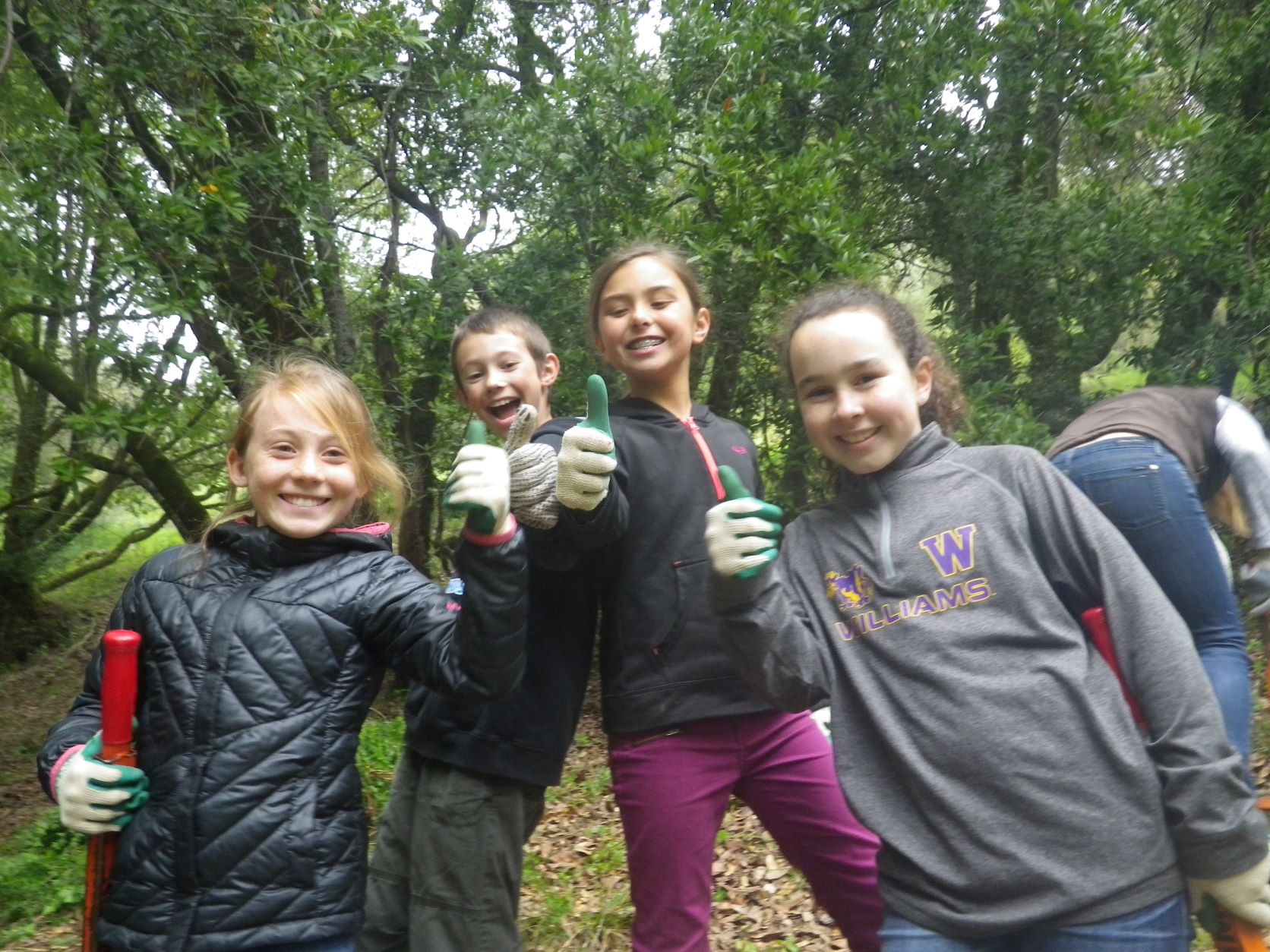 |
|
Enjoying a morning of volunteering on the mountain! Marin Water's habitat restoration volunteer events are suitable for ages 8 and up. Photo: Marin Water
|
Habitat Restoration: Saturday, December 17 and Tuesday, December 20, 9 am-12 pm (plus more to come!)
Help improve the oak woodland and grassland habitat near Phoenix Lake on the Mt. Tamalpais Watershed by removing French broom, a weed affecting the area. This family-friendly event, hosted by Marin Water, is suitable for ages 8 and older, and volunteers younger than 16 must be accompanied by a parent or guardian. Tools, gloves, snacks and water are provided. Dress for variable weather, as these events are canceled only in cases of extreme winds or heavy downpours. Call 415-945-1128 after 8 am. on the morning of the event for updates. Meeting location is Natalie Coffin Green Park, between 8:40-9 am, event starts at 9 am.
These habitat restoration events will continue through the winter and spring, on the third Saturday of every month! Check onetam.org/calendar for dates and details.
Litter Abatement Orientation, half-hour slots available throughout December
Ready to get some fresh air and contribute to keeping the Mount Tamalpais Watershed clean? Sign up with Marin Water to remove trash from high-use areas, along waterways and trails. Suitable for ages 8 and older, this work protects critical habitats and waterways. Trash bags and sanitized trash-grabber tools provided. Once you have completed the brief orientation, you may hunt for litter whenever you want. Register for your half-hour orientation today on our website. Meeting location for the orientation is the employee parking lot at Sky Oaks Ranger Station. Parking passes are provided to volunteers. Suitable for ages 8 and up.
On deck for winter are also Marin Water's annual Turtle Observer Trainings coming up in February and Frog Docent Trainings in March – keep your eye on onetam.org/calendar for updates.
|
|
| |
| |
COMMUNITY SCIENTISTS ARE THE BEE's KNEES!
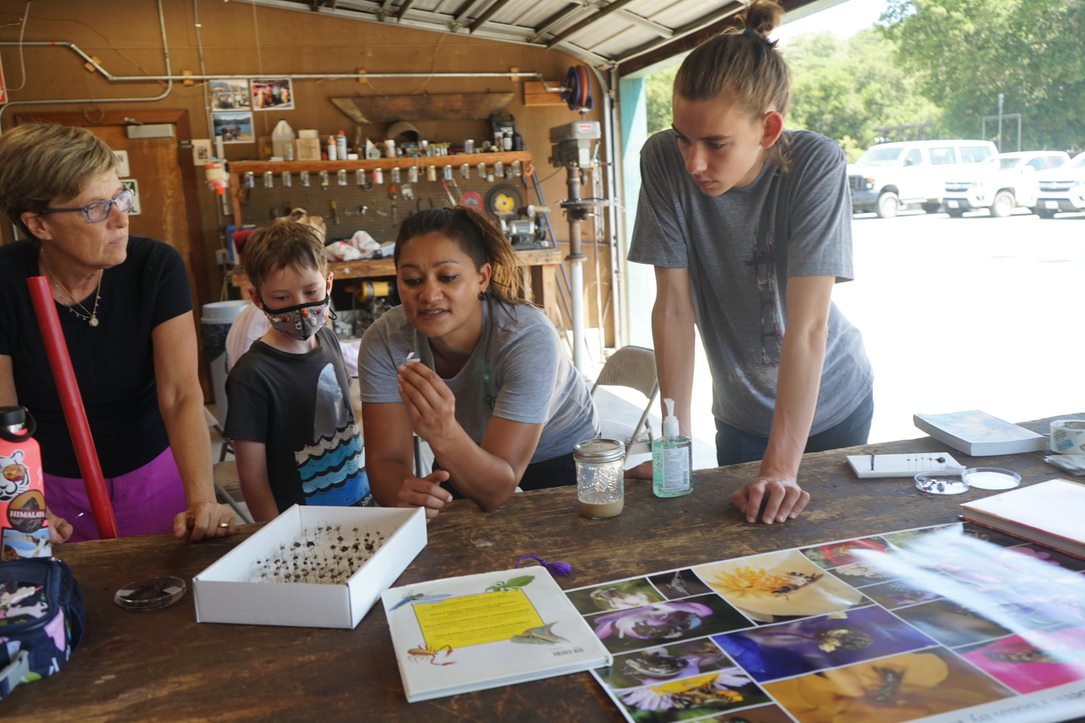 |
|
One Tam Community Science Program Manager Sara Leon Guerrero teaches volunteers to identify bees. Photo: Lisette Arellano/Parks Conservancy
|
| |
This season, 103 community science volunteers contributed to One Tam’s inventory of the mountain’s wild bees, for a total of 374 hours of processing specimens and learning about these important pollinators. Thank you – the Tamalpais Bee Lab and our increasing understanding of bees in Marin would not be possible without you.
What have we learned so far about Marin’s wild bees? Check out the recent presentation by Community Science Program Manager Sara Leon Guerrero from our fall Sneak Peek into Peak Health event to find out starts – Sara's talk starts at 32:10 minutes. (Spoiler: we are excited by the diversity of species we’ve seen, we think bees overall are doing pretty well in Marin, and we have more to learn!)
While our volunteers take a break, the Bee Lab will still be buzzing with activity to reflect on our work so far and to plan the next phase. For now, you can support our local pollinators in other ways, such as:
|
|
| |
WINTER FOR MONARCH BUTTERFLIES IN MARIN
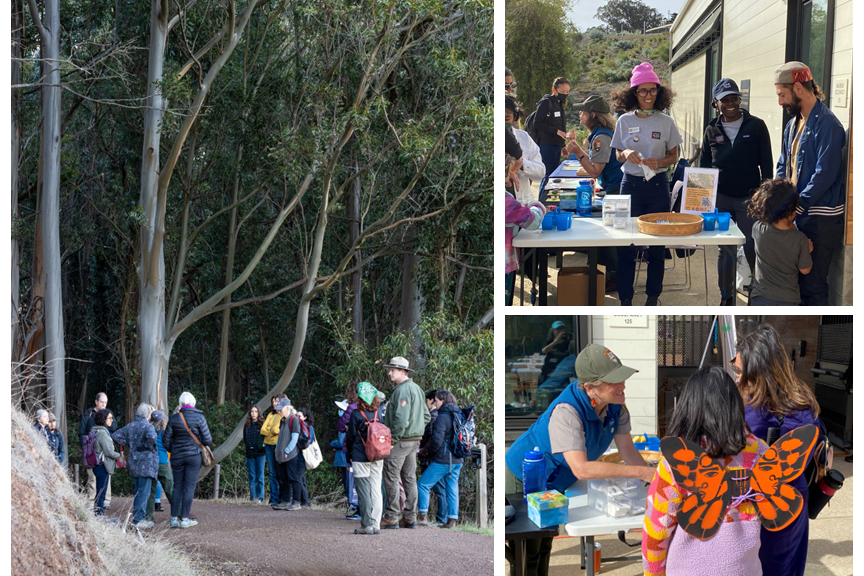 |
|
Left: NPS Ranger and Marin Community Liaison Mia Monroe led a walk at a historical monarch overwintering site at Fort Baker in the Marin Headlands, supported by NPS Wildlife Biologist Bill Merkle, NPS Intern Madison Perry, Parks Conservancy’s Director of Conservation & Community Science Yolanda Molette and One Tam Community Science Fellow Nicolette Michel. We learned about monarch migration and life cycle, community science efforts that help document their migration each fall and winter, and One Tam’s work to support this struggling species. This experience was offered as part of the 2022 One Tam Summit: Peak Health. Photo: Alex Grant/Parks Conservancy
Right (top and bottom): Science meets art through monarch migration. This fall, the Parks Conservancy, Presidio Trust, National Park Service (NPS), and social justice artist Favianna Rodriguez collaborated to engage about 70 youth in a “Migration is Beautiful" workshop. Favianna uses the phrase “Migration is Beautiful” to celebrate the resiliency, courage, and determination of migrants who come in search of their dreams. She led the youth in designing their own butterfly wings while staff shared an interactive monarch butterfly display and activities, and engaged the participants in telling their own migration stories. Photos: Yolanda Molette/Parks Conservancy
|
| |
Have you seen any monarch butterflies lately? By now, the species’ western population has largely navigated toward coastal areas looking for suitable places where they have historically spent the winter. They select trees in areas with suitable conditions that take into account sun exposure, wind protection, and nearby nectar plant resources. Community scientists are documenting how many of the butterflies are appearing at overwintering sites, and you can follow or join that work here. Next year, their results will be tabulated and contribute to our understanding of how the western monarch population is doing. Check out a map of this migration here.
One Tam partners are contributing to efforts to help monarchs by assessing habitat quality and restoration potential at four historic overwintering locations on public lands in Marin. Our goal is to increase the suitability of those sites for butterflies migrating through and overwintering in our region. We are also working to creatively engage groups to learn more about the monarch butterfly and migration – you can see recent examples in the photos above. Learn more about our work here.
How can you support monarch conservation as we head into winter? Here are a few ideas:
|
| |
|
| |
| |
Your INPUT NEEDED FOR BOTHIN MARSH PROJECT
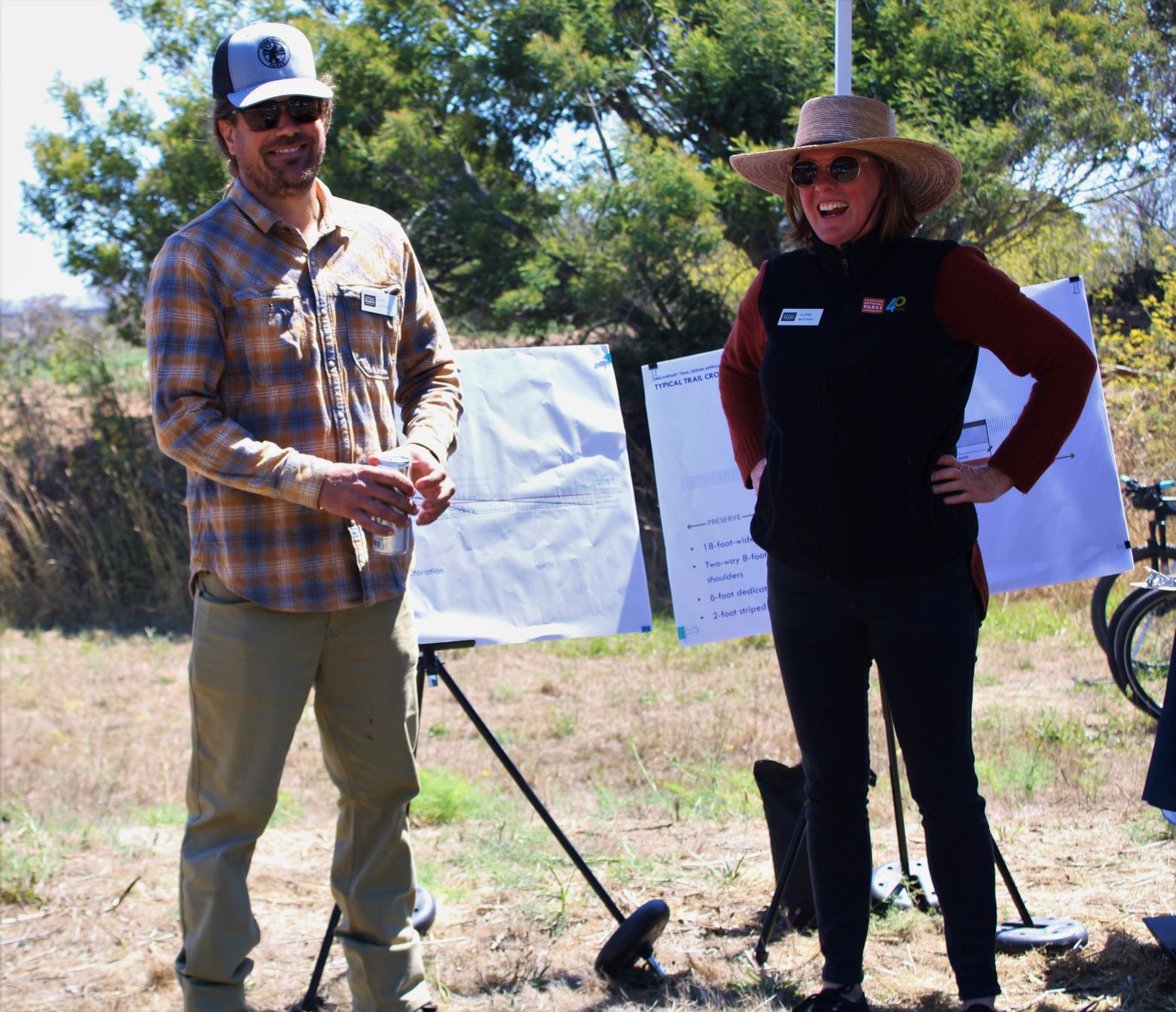 |
|
Parks Conservancy staff Rob LaPorte, Project Manager, and Claire Mooney, Vice President of Park Places and Innovation, talk marsh-side with community members about a new trailhead at Tam Junction. Photo: Martha Cerda/Parks Conservancy
|
| |
Over the past several months, One Tam partner staff have been out in the community talking about the Evolving Shorelines project at Bothin Marsh. You may have seen us at a pop-up event in August at the new proposed trailhead location near Tam Junction, or meeting folks along the Mill Valley-Sausalito pathway with the Tam Van. We’ve also hosted youth workshops, presented at community meetings, and joined Creekside Fridays in Tam Valley.
We discussed a suite of options identified for pathway and trailhead improvements, and heard from community members regarding trailhead amenities, their experience of these spaces, parking and traffic congestion. We also heard resounding support for habitat restoration. Thanks to all who have provided input for this project so far, it’s been critical for planning a project that will work for the marsh’s and the community’s needs. Based on these initial conversations, we have developed some guiding principles to inform next steps in design and are seeking more community feedback.
We need your help! If you want to weigh in on the future of Bothin Marsh Preserve and the Mill Valley-Sausalito Pathway, please take a moment to share your thoughts here.
Our project team has learned a great deal about Bothin Marsh Preserve through scientific studies conducted over the last year. Our findings include:
- Important details such as utility infrastructure locations and easements, property boundaries, rare plant populations, and detailed topography have all been mapped
- Our engineers have studied how the path could be raised in an ecologically sound way, looking ahead to mid-century sea level rise
- Working within infrastructure constraints and the need to protect sensitive species, we have identified the specific location for the new pathway
- A series of alternatives to connect the sediment flows from Coyote Creek to the marsh have been modeled and refined, part of a critical strategy to improving marsh resiliency
Along with additional community input (don't forget to take the survey and help spread the word!) and completion of a few more studies, we look forward to sharing the preliminary designs by the spring of 2023.
|
|
| |
ONE TAM YOUTH PROGRAM UPDATE: GROWING AND CHANGING
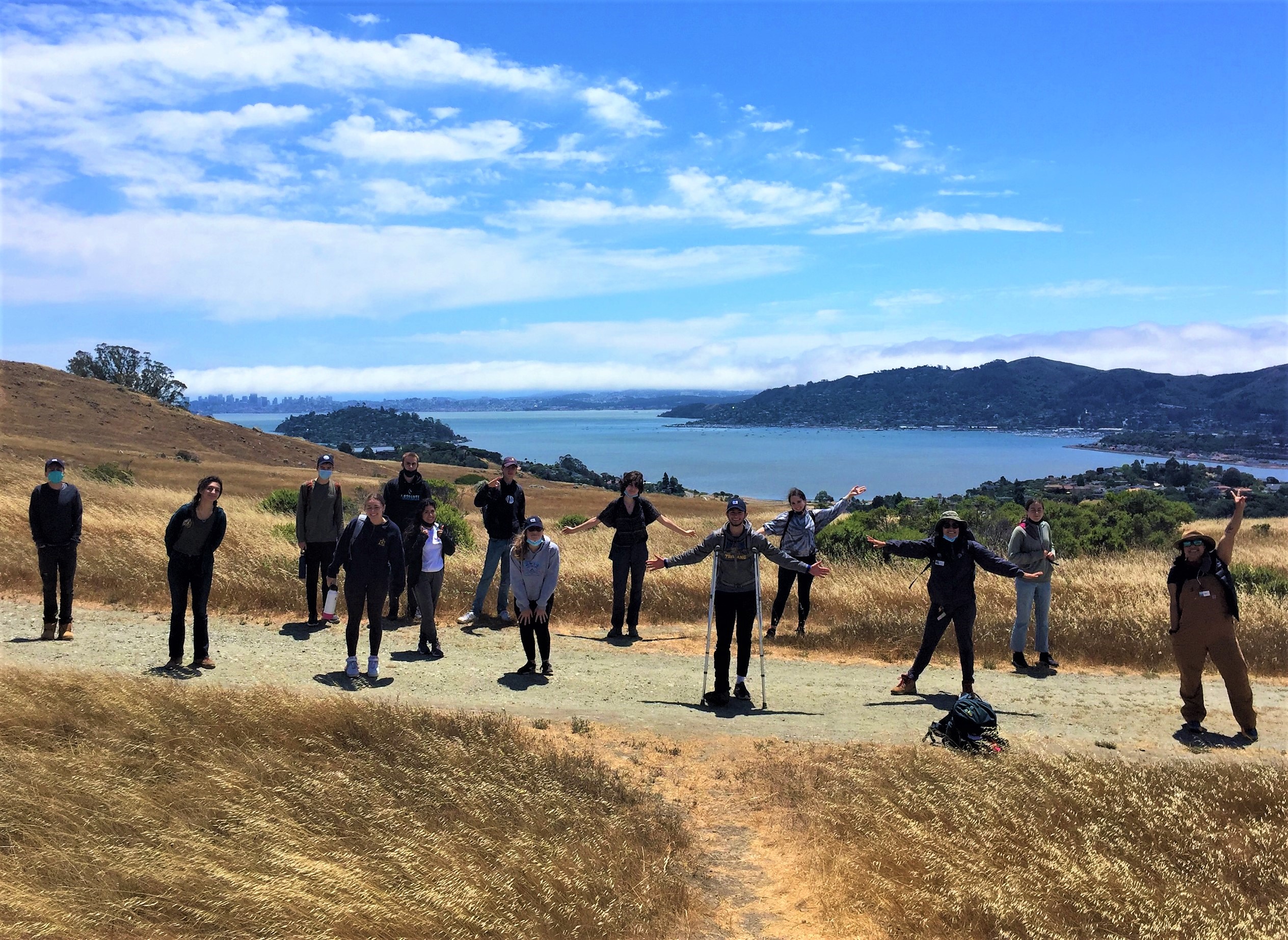 |
|
LINC participants from our 2021 cohort experience Ring Mountain. Photo: Adriana Castillo/Parks Conservancy
|
| |
One Tam is committed to creating unique and meaningful ways for youth to connect to the mountain and deepen their relationships to our local environment. We are excited to let you know about a proven school-year-long program that we’re now offering to Marin youth: Inspiring Young Environmental Leaders (I-YEL). I-YEL is a high school leadership program where students learn the skills necessary to be stronger leaders in their community through project management, community involvement, and outdoor trips. Our first cohort is underway, and we’ll be excited to update yu on what they’re up to.. This program has been a cornerstone of youth program offerings at the Parks Conservancy, and we’re excited to offer this to Marin youth. Because of this pivot, we will no longer be offering the Rising Environmental Youth Leaders program that we’ve enjoyed for the past three school years. But, we’re folding in the innovations and learnings from that amazing program into I-YEL. You can see a full listing of our youth program offerings here.
In other youth news, we will soon be saying goodbye to one of our talented One Tam Youth Program Managers, Grecia Solis Pacheco. We are so thankful for all her work to bring innovative programs for Marin youth, grounded in Mt. Tamalpais and the local environment. Happiest trails, Grecia!
Lastly, applications for our summer internship program for high school students – LINC, Linking Individuals to their Natural Community – will open in January 2023 – we’ll announce it on our website and social media. Don’t miss your chance to join this transformational summer opportunity!
|
| |
|
| |
| |
Winter Wonders: Bothin's Birds
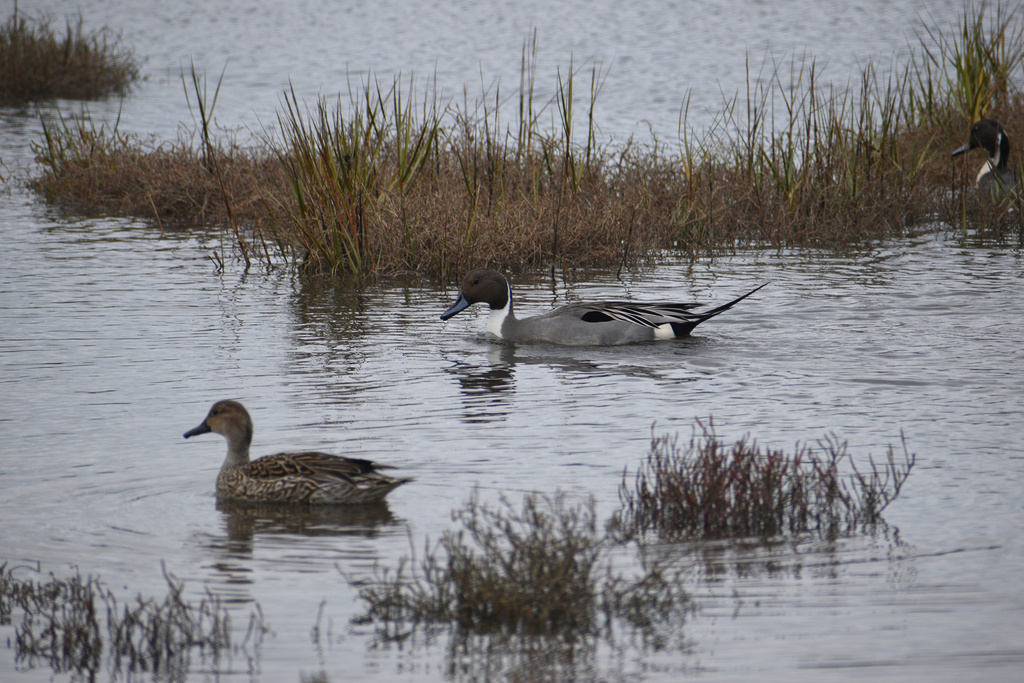 |
|
Northern pintails are one of the many migratory species that you can view at Bothin Marsh this time of year. Photo: Nathanael Aff via iNaturalist
|
| |
You know that One Tam is working to protect Bothin Marsh as seas rise. Did you also know that December is prime time for birdwatching at Bothin Marsh, and that the marsh is an important place for migratory species visiting our region? Over 400 species of migratory birds, traveling south along the Pacific Flyway, will join the numerous year-round resident species throughout the winter.
If you look closely at this incredibly diverse assortment of birds, you’ll start to notice lots of variation in their characteristics and behaviors. Aside from contributing to a stunning scene, this variation allows species to access different foods as they forage without directly competing with each other. Why do shorebirds have different leg and bill lengths, for example? (Hint: so they can forage at different water depths, or access different depths of mud!) Or why do some ducks dive and others dabble? (Hint: because they eat different things – divers catch fish and crustaceans deeper in the water, and dabblers look for vegetation and small invertebrates at or near the surface). What else will you see?
Learn more about Bothin Marsh and plan your visit here. You can also take a peek at online guides to the birds of Bothin Marsh from iNaturalist and eBird to get acquainted with what you may see before you go, and to contribute observations of your own! If you’re further inspired, consider joining a winter community science opportunity to help document birds through the Marin Audubon Society.
As an aside, did you know that sea level rise may affect wildlife on the marsh? The "king tides" are coming up this winter on December 23-24 and January 21-22, and provide a window into what life with more water may look like. The king tides at Bothin Marsh typically inundate the entire marsh causing wildlife such as the Ridgway rails and harvest mice to seek refuge on high ground. High tides are increasingly flooding sections the multiuse pathway, roads, and parts of the surrounding community highlighting the importance of adapting to live with more water. Visit the California King Tides Project to participate in documenting your King Tide observations or attend a King Tide event near you.
|
| |
|
| |
About Us
|
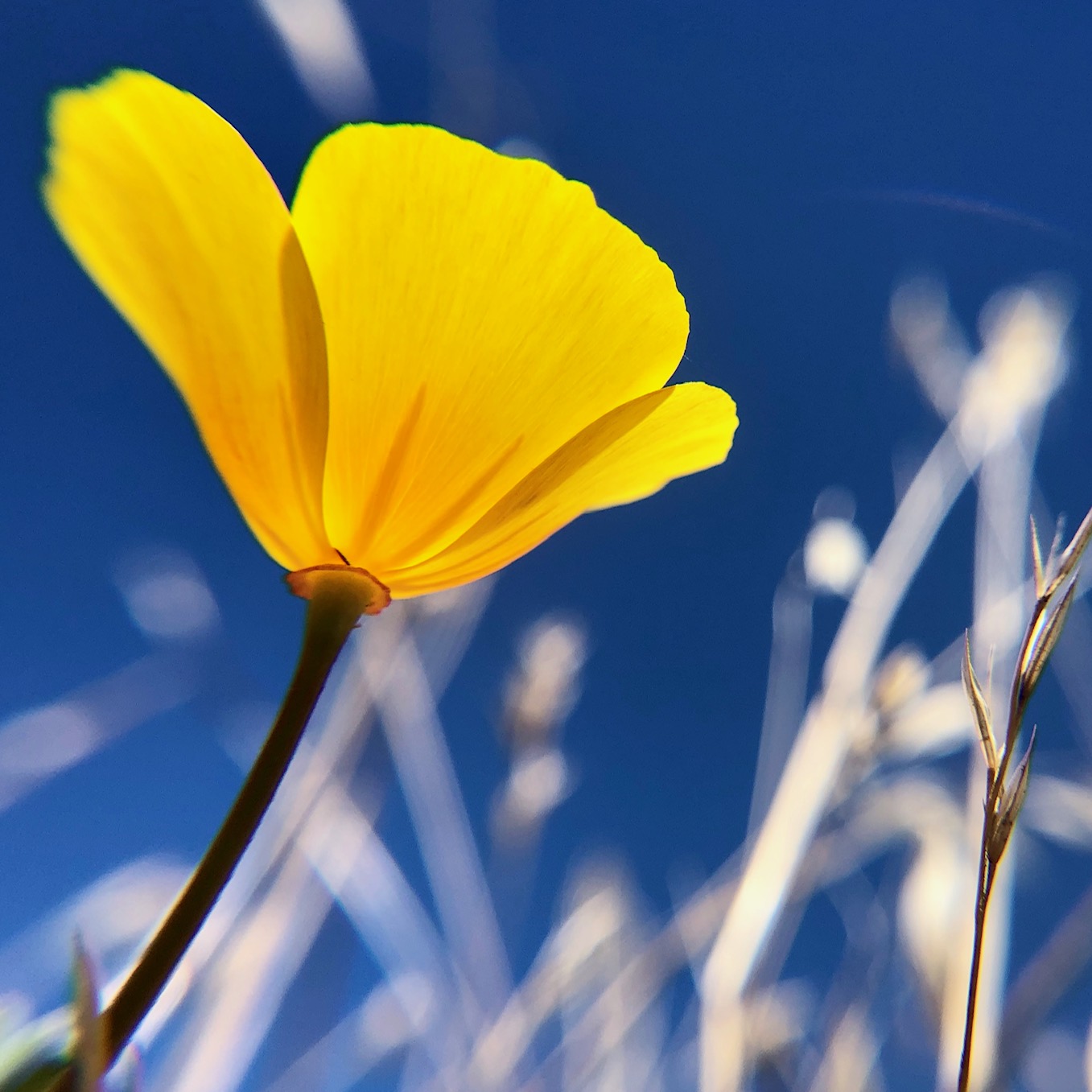 |
|
Photo: Monica Stafford/One Tam
|
|
One Tam works to ensure a healthy, vibrant and diverse landscape for our beloved and iconic Mt. Tam. We are the community-supported partnership of Mt. Tam’s land agencies and managers.
One Team leads programs that care for our mountain, inspire our next generation of land stewards and strengthen our local community. We invite you to join us.
|
|
| |

Going Further, Together
|
| One Tam brings together inspired community members with its five partners to support the long-term stewardship of Mt. Tam. |
| |
 |
| |
|